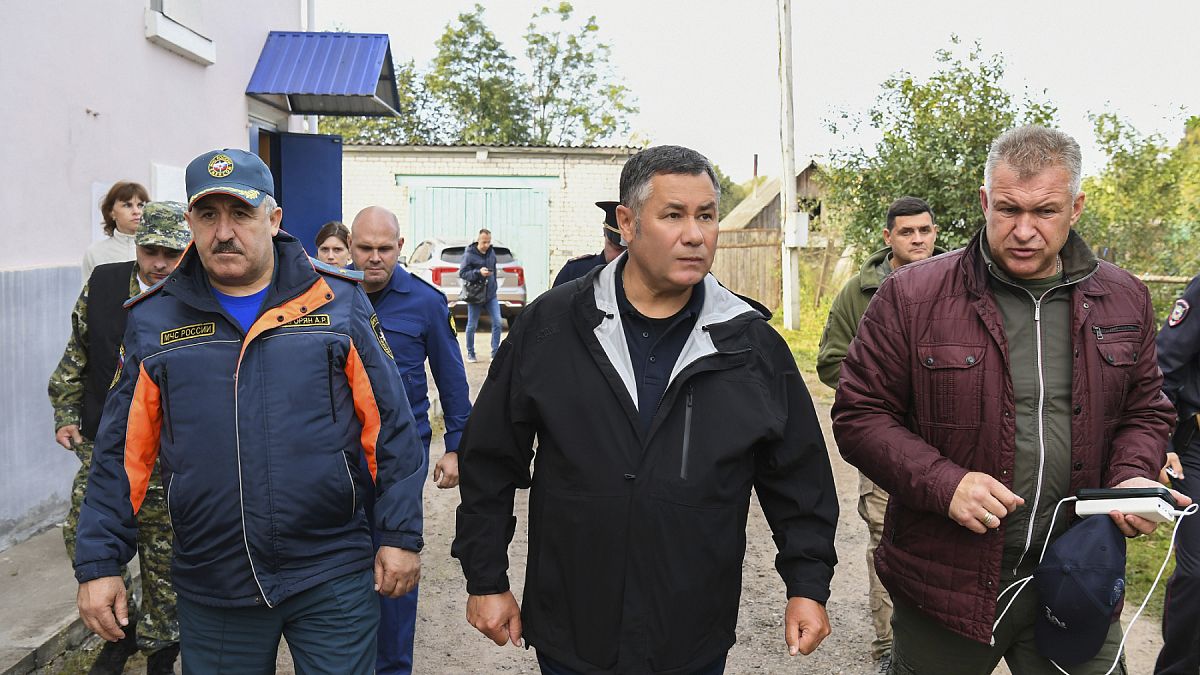The recent conflict between Ukraine and Russia has resulted in conflicting reports regarding the cause and scale of attacks in the region. In Russia’s Tver region, a military depot in the town of Toropets was struck by Ukrainian drones, leading to a partial evacuation order. According to a Kyiv security official, the attack was carried out by Ukraine’s Security Service, Intelligence, and Special Operations Forces. The facility housed various missiles, glide bombs, and artillery shells, causing a significant fire to break out in a 6-kilometre-wide area. However, the governor of the Tver region claimed that the fire was a result of a Ukrainian drone being shot down by Russian air defense systems.
In response to the attack in the Tver region, Russian forces retaliated by dropping three guided aerial bombs on a town in Ukraine’s Sumy region, leading to injuries, damage to property, and a grain elevator. The Russian Ministry of Defence also released footage showing their fighter-bombers targeting personnel and military equipment in the Kursk region of Ukraine. The ongoing conflict has left residents in the Komyshuvakha community of the Zaporizhzhia region dealing with the aftermath of a massive Russian army attack that resulted in casualties and significant damage to buildings and vehicles. The shelling caused a residential building to catch fire, spreading across a large area.
The escalation of attacks in the region has raised concerns about the potential for further violence and casualties. The conflicting reports from both sides highlight the challenges of verifying information in a conflict situation. The use of drones for military strikes has become increasingly common, allowing for targeted attacks on specific facilities or individuals. However, the collateral damage from these strikes can be significant, leading to injuries and destruction of property.
The impact of the conflict is felt not only in terms of physical damage but also in the loss of life and displacement of civilians. The ongoing violence has created a humanitarian crisis in the region, with many people forced to flee their homes in search of safety. The international community has expressed concern over the situation and called for a peaceful resolution to the conflict. Efforts to de-escalate tensions and negotiate a ceasefire are ongoing but have so far been unsuccessful.
As the conflict continues, the need for a diplomatic solution becomes more urgent. Both Ukraine and Russia must prioritize dialogue and compromise to avoid further bloodshed and destruction. The use of military force only perpetuates the cycle of violence and does not address the root causes of the conflict. It is essential for the international community to support diplomatic efforts and provide humanitarian assistance to those affected by the conflict. Only through cooperation and mutual respect can lasting peace be achieved in the region.











